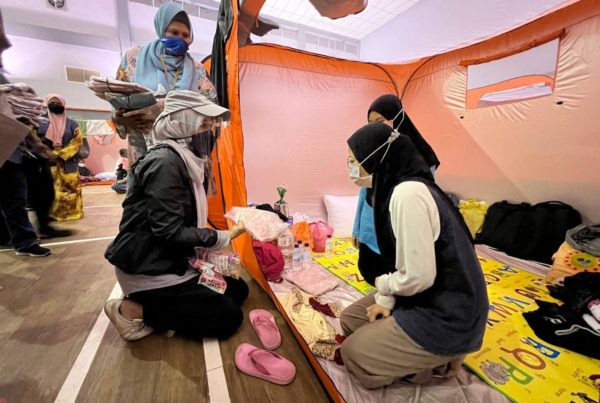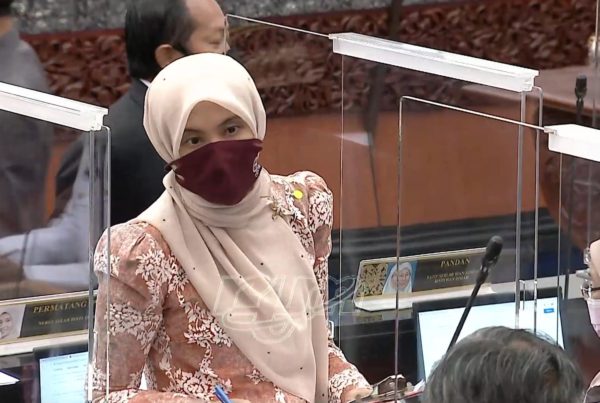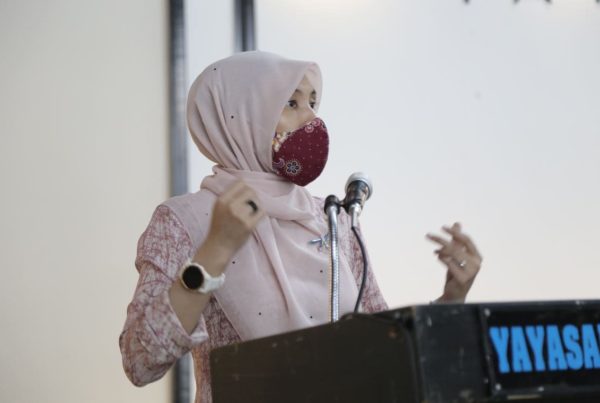Joint Media Statement by Nurul Izzah Anwar, PKR Vice-President and
Member of Parliament for Lembah Pantai and Tony Pua, DAP National
Publicity Secretary and Member of Parliament for Petaling Jaya Utara
Sunday, 6 February 2012 in Kuala Lumpur
——————————————————————————-
The abuse of EPF to extend soft loans to low-cost housing purchasers is a blatant attempt by the Ministry of Finance to circumvent the need to add to the Federal Government debt
What appears to be a routine and noble scheme to assist the poor who are unable to secure bank financing to purchase their low-cost housing units has stirred controversy ove-r how the Employees Provident Fund is being abused by the Federal Government for political motives.
Under normal circumstances, any welfare programmes will be funded by the Federal Government through its tax revenues. In the event that tax revenues prove insufficient, the Federal Government may issue bonds to raise money to finance its deficit expenditure. Again under normal circumstances, EPF could subscribe to the bonds issued by the Federal Government, hence in effect lending to the Federal Government.
It is hence extremely odd that the Minister of Federal Territories and Urban Well-Being, Datuk Raja Nong Chik Nong Raja Zainal Abidin announced that the Employee Provident Fund will be extending RM1.5 billion in loans directly to those who failed to secure commercial loans to purchase their houses.
The difference between the two approaches is that the Federal Government is considered a low-risk borrower and hence the contributions by Malaysian workers to the EPF are considered safe, while the loans to those who failed to obtain commercial housing loans
are considered very high-risk borrowers.
We have over the past week attacked the Government for putting EPF funds at risk. However, the fact that the Government could have easily circumvented the entire controversy and still achieve the objectives of helping the poor by issuing bonds to the EPF, arouses suspicion that something is amiss.
We can only conclude that the Government did not want to borrow directly from EPF, and instead passed the buck to EPF to lend directly to the low-cost housing purchasers because the Government does not want to further increase further to its much criticised and already high debt levels. The Federal Government debt has reached RM456 billion as at the end of 2011, which is a 88.4% increase from RM242 billion 5 years ago in 2006.
Will our debt levels expected to increase significantly in the next year as a result of massive infrastructure projects such as the RM53 billion Klang Valley MRT, the RM7.1 billion West Coast Expressway, the Ministry of Finance (MoF) is attempting all means to reduce its debt obligations.
Instead of issuing debt papers, the MoF is attempting to hide its debt exposure by issuing Government guarantees instead. Therefore, the EPF is being asked to lend RM1.5 billion to those who failed to secure loans from banks, and the loans will be in some form “guaranteed” by the Federal Government. This way, the RM1.5 billion will not be reflected as an increase Federal Government debt.
In the current climate of sovereign credit crisis, especially in Europe as epitomised by the Greek financial fiasco, the Federal Government is attempting what is called “off-balance sheet financing” to hide from public view its total debt exposure. In fact, as at the end of 2010, the Government’s contingent liability i.e., loans which were “guaranteed” by the Government but are not directly part of the Federal Government debt has reached RM96.9 billion in 2010, which is a sharp 14.9% increase over RM84.3 billion in 2009.
In the event that some of these guaranteed loans goes into default, then the Federal Government will be directly exposed to the debt and this will trigger a debt induced financial crisis in Malaysia. For example, the government guarantee for Port Klang Free Zone project’s RM3.6 billion has resulted in the Federal Government having to extend at least RM4.6 billion in loans to bail-out the project. The cost is further expected to increase to RM12.5 billion.
Apart from MoF debt papers, there are already alternatives available to help the poor. Cagamas Bhd was set up in 1987, enabling banks to extend more housing loans. And recently in 2008, the government established a fund to provide loans for farmers, small traders, i.e those without fix incomes to buy low and medium cost housing.
Unfortunately, to be constantly perceived by the rakyat as the champion for the poor, the government is now coming up with a new and ill thought scheme – utilizing EPF monies to hide its current debt levels.
The MoF must not renegade from its responsibility as not only the caretaker of our coffers but also as a prudent decision maker as MoF screens and approves all decisions made by EPF’s investment panel.
The Ministry of Finance and the Federal Territories Ministry must hence come clean on why it has chosen to risk the worker’s retirement savings and the real reason why the Government can’t fund the housing for the poor directly. The MoF must solve its own financial problems and not for the Malaysian workers to bear the burden of the BN government’s follies.



